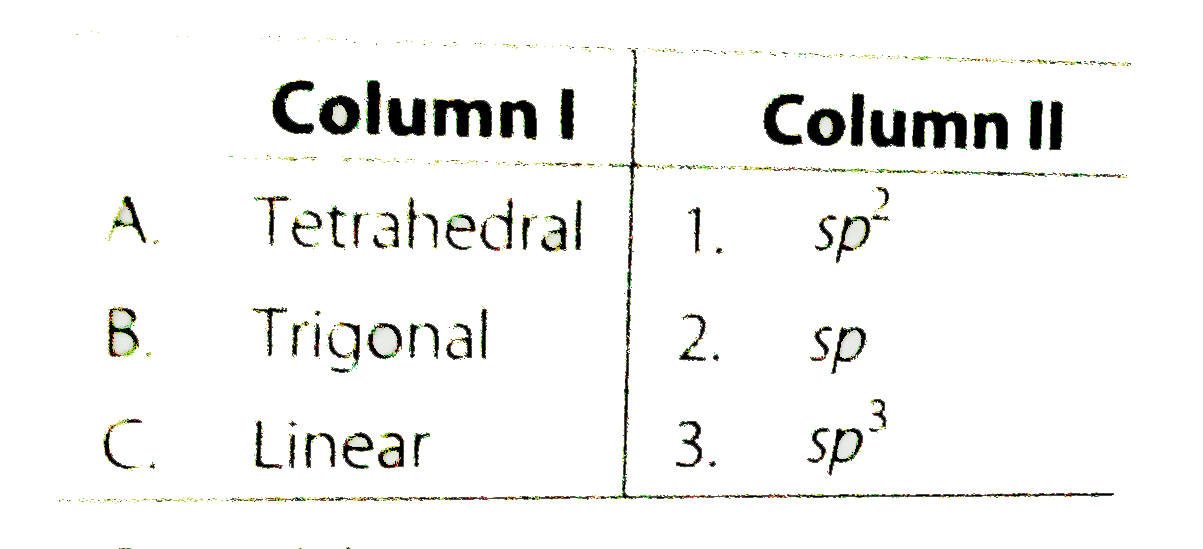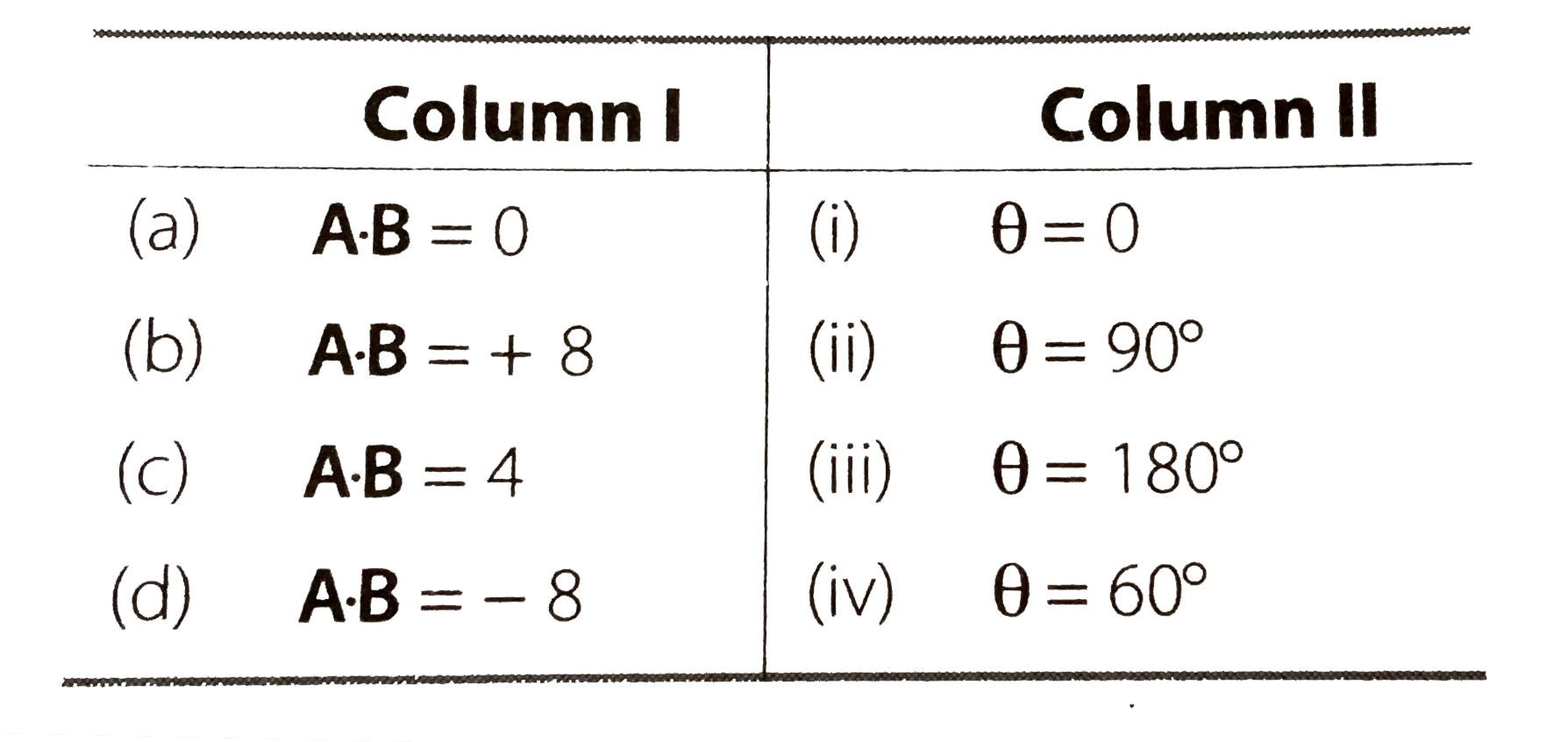Match the elements given in Column I with the properties mentioned in Column II.
ColumnIColumnIIA.Li1.Insoluble sulphateB.Na2.Strongest monoacidic baseC.Ca3.Most negativeEΘvalue among alkali metalsD.Ba4.Insoluble oxalate5.6s2outer electronic configuration
(i)→(c),(ii)→(b),(iii)→(d),(iv)→(a,e)
Due to lower ΔiH1 of Na (496kJmol−1) than Li (520kJmol−1) , Na is a stronger monoacidic base , than Li, BaSO4 is insoluble while barium oxalate is somewhat soluble , therefore , (iii) matches with (d) .
Similarly , barium sulphate is insoluble but calcium sulphate is somewhat soluble .
Topper's Solved these Questions
- BOOK - PRADEEPCHAPTER - S-BLOCK ELEMENTS (ALKALI AND ALKALINE EARTH METALS) EXERCISE - NCERT EXEMPLAR PROBLEMS WITH ANSWERS , HINTS AND SOLUTIONS (Assertion and Reason Type Questions)2videos
S-BLOCK ELEMENTS (ALKALI AND ALKALINE EARTH METALS)
- BOOK - PRADEEPCHAPTER - S-BLOCK ELEMENTS (ALKALI AND ALKALINE EARTH METALS) EXERCISE - NCERT EXEMPLAR PROBLEMS WITH ANSWERS , HINTS AND SOLUTIONS (Long Answer Questions)9videos
S-BLOCK ELEMENTS (ALKALI AND ALKALINE EARTH METALS)
- BOOK - PRADEEPCHAPTER - S-BLOCK ELEMENTS (ALKALI AND ALKALINE EARTH METALS) EXERCISE - NCERT EXEMPLAR PROBLEMS WITH ANSWERS , HINTS AND SOLUTIONS (SHORT ANSWER QUESTIONS)12videos
S-BLOCK ELEMENTS (ALKALI AND ALKALINE EARTH METALS)
- BOOK - PRADEEPCHAPTER - REDOX REACTIONS EXERCISE - Assertion reason type question16videos
REDOX REACTIONS
- BOOK - PRADEEPCHAPTER - SOLID STATE EXERCISE - Advanced problems19videos
SOLID STATE
Similar Questions
Match the elements given in Column I with the properties mentioned in Column II.
ColumnIColumnIIA.Li1.Insoluble sulphateB.Na2.Strongest monoacidic baseC.Ca3.Most negativeEΘvalue among alkali metalsD.Ba4.Insoluble oxalate5.6s2outer electronic configurationView SolutionMatch the elements given in Column I with the colour they impart to the flame given in Column II.
ColumnIColumnIIA.Cs1.Apple greenB.Na2.VioletC.K3.Brick redD.Ca4.YellowE.Sr5.Crimson redF.Ba6.BlueView Solution
Knowledge Check
- Question 1 - Select One
Match the elements given in column (I) with the most appropriat expected values given in column II
Column IColumn IIElementElectronegative valuesA.F(p)3.5B.O(q)3.0C.N(r)4.0D.C(s)2.5AA(r ), B(p),C(q),D(s)BA(s),B(q),C(r ),D(p)CA(p),B(q),C(r ),D(s)DA(r ),B(q), C(p),D(s) - Question 2 - Select One
Match the entries listed in column I with appropriate properties listed in Column II
Column IColumn II(A)He(i)High electron affinity(B)Cl(ii)Most electropositive element(C)Ca(iii)Strongest reducing agent(D)Li(iv)Highest ionization energy
The correct match of contents in Column I with those in Column IIAA−iiiB−iC−iiD−ivBA−ivB−iiiC−iiD−iCA−iiB−ivC−iD−iiiDA−ivB−iC−iiD−iii
Match the shape of molecules in Column I with the type of hybridisation in Column II.
 View Solution
View SolutionMatch the types of colloidal systems given in Column I with the name given in Column II.
Column IColumn IIA.Solid in liquid1.FoamB.Liquid in solid 2.SolC.Liquid in liquid 3.GelD.Gas in liquid4.EmulsionView SolutionIf |A|=2 and |B| = 4, then match the relation in Column I with the angle θ between A and B in Column II.
 View Solution
View SolutionMatch the items given in Column I with examples given in Column II.
 View Solution
View SolutionMatch the species in Column I with the bond order in Column II
Column I Column II (i)NO (a)1.5(ii)CO (b)2.0(iii)O−2 (c)2.5(iv)O2 (d)3.0View SolutionMatch the items given in Column 1 with examples give in Column II.
Column IColumn II(a)Hydrogen bond(i)C(b)Resonance(ii)LiF(c)Ionic solid(iii)H2(d)Covalent solid(iv)HF(v)O3View Solution

